Introduction
How Big Should A Cockatiel Cage Be: Selecting the right cage size for your pet cockatiel is a crucial decision that directly impacts their health, happiness, and overall well-being. Cockatiels are delightful and intelligent birds known for their playful and social nature, making them a popular choice among bird enthusiasts. To ensure your feathered friend thrives in captivity, it’s essential to provide them with an appropriately sized cage that accommodates their needs. In this guide, we will delve into the factors that influence cage size, the minimum requirements for a comfortable living space, and tips for creating an enriching environment for your beloved cockatiel. Whether you’re a new cockatiel owner or looking to upgrade your feathered friend’s habitat, understanding the significance of cage size is the first step towards fostering a happy and healthy bond with your cherished avian companion.
In the world of pet birds, cockatiels stand out for their captivating personalities, charming crests, and melodious whistles. These small parrots are renowned for their sociable disposition, making them highly interactive and affectionate pets. However, their vivacious nature also means they require ample space to spread their wings, explore, exercise, and engage in natural behaviors. The size of a cockatiel lay cage is pivotal in ensuring your pet’s physical and mental well-being. A cage that is too small can lead to stress, obesity, and boredom, while a properly sized one allows for physical activity and mental stimulation, promoting a contented and thriving cockatiel.
In this comprehensive guide, we will explore the factors that determine the ideal cage dimensions for a cockatiel, taking into account their habits, needs, and the essentials of a comfortable living space. We will also provide you with valuable tips on cage setup, including perches, toys, and feeding stations, to help create a dynamic and enriching environment that caters to your cockatiel’s overall health and happiness. So, if you’re eager to ensure your cockatiel enjoys a fulfilling and enjoyable life as your feathered companion, read on to discover the critical considerations when determining the size of a cockatiel cage, and embark on a journey towards fostering a strong and affectionate bond with your beloved avian friend.
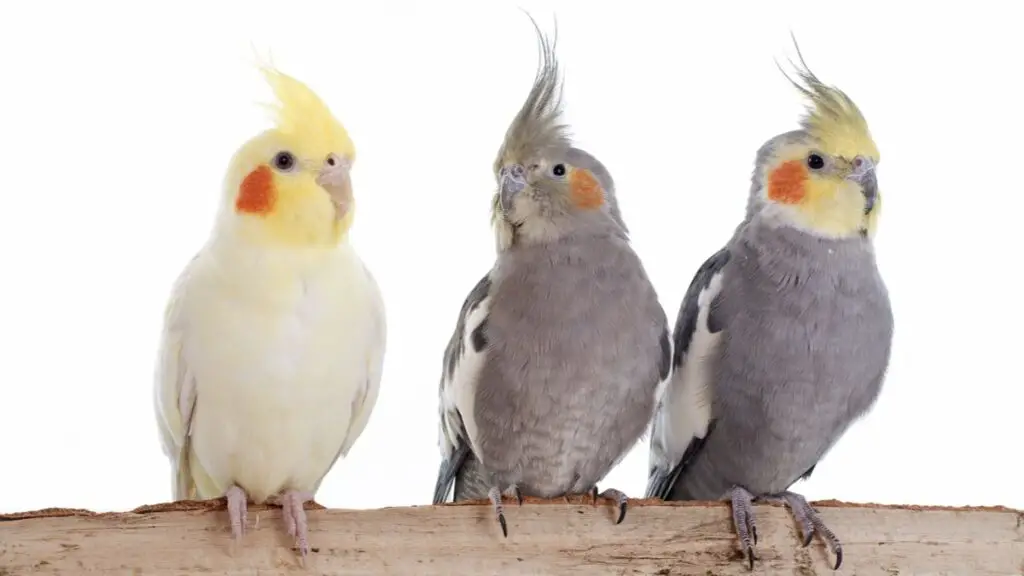
Is 1 cockatiel enough?
It’s always best to keep cockatiels in pairs. Though many people buy individual birds, one after the other, as it is easier to train them, cockatiels are social and talkative by nature. However, this is subjective. Sometimes, rescued cockatiels may prefer to remain alone with their human keepers.
Simplicity: One of the primary advantages of owning a single cockatiel is the simplicity it offers. A single bird requires less space, less maintenance, and may be easier to manage for individuals or families with busy lifestyles.
Bonding: A solo cockatiel may be more likely to form a close bond with its human caregiver. With no other bird to compete for attention, your cockatiel may become more attached and interactive with you.
Reduced Noise: Multiple cockatiels can be quite noisy, especially when they engage in vocal interactions. A single cockatiel typically generates less noise, making it a more suitable choice for noise-sensitive households or apartments.
Avoiding Social Conflicts: Cockatiels can sometimes exhibit territorial or aggressive behaviors when housed together. Owning a single bird eliminates the potential for such conflicts.
Do cockatiels need 2?
Cockatiels do not necessarily need to live in pairs. If your new bird is tame and likes to be handled, then you are her companion. At her age, it would not be a good idea to get a male, because you don’t want to encourage her to breed. And she might not accept a female.
Flock Animals: In their natural habitat, cockatiels are social creatures that live in flocks. This social structure provides them with companionship, safety, and opportunities for various activities like preening, foraging, and vocalizing.
Benefits of Companionship: Having another cockatiel as a companion can offer several advantages. It provides social interaction, mental stimulation, and opportunities for the birds to engage in natural behaviors. Companions can preen each other, play together, and vocalize, mimicking their natural flock behavior.
Possible Loneliness: Some cockatiels kept in solitary confinement may experience loneliness and boredom, leading to behavioral issues like feather plucking, excessive screaming, or depression. They may look to their human caregivers to fulfill their social needs.
Owner Interaction: If you are committed to spending significant time with your cockatiel every day, providing mental stimulation, and offering opportunities for social interaction, a single cockatiel can thrive and be content with human companionship.
Can you potty train a cockatiel?
Parrots learn quickly, and tame parrots can be potty trained no matter their age. Potty-trained parrots can make better house pets on a long-term basis, and the habit can be developed in as little as 72 hours.
Understanding Cockatiel Behavior: Before attempting potty training, it’s crucial to recognize cockatiel behavior. Cockatiels instinctively relieve themselves frequently, making it challenging to predict when they will need to go.
Use of a Cue Word: One approach to potty training is to associate a cue word or phrase with the act of elimination. Whenever you notice your cockatiel is about to relieve itself (which can often be recognized by body language or vocalizations), say your chosen cue word consistently. Over time, your bird may learn to associate the cue word with the action.
Timing and Patience: Potty training a cockatiel requires patience and consistency. You will need to observe your bird closely and be prepared to act quickly when you recognize the signs that it needs to go. Offering a treat or praise after a successful “potty” can reinforce the behavior.
Designated Area: You can also try to train your cockatiel to use a designated area for elimination, such as a small perch or a particular spot within the cage. Again, patience and repetition are key, as is consistently rewarding the behavior when it occurs in the desired location.
Where is the best place to put a cockatiel cage?
Birds need at least one side of their cage up against a wall, as it provides them with a feeling of security. The ideal placement is in a corner where they can have two walls. Additionally, you shouldn’t put your bird’s cage directly in front of a window, as outside factors like dogs, hawks, and storms will scare them.
Natural Light and Sunlight
Cockatiels thrive with exposure to natural light. Place the cage in a room with ample daylight, but avoid direct sunlight, which can overheat the cage. Ensure that the cage is not exposed to drafts from windows or doors, as these can be harmful to your bird.
Family Interaction
Cockatiels are social creatures that enjoy being part of the family. Position the cage in a common area where your bird can observe and interact with household activities. This helps prevent feelings of isolation and boredom. Keep the cage out of reach of other pets, particularly cats and dogs, to ensure the safety of your cockatiel.
Temperature and Humidity
Maintain a stable room temperature between 70-80°F (21-27°C). Avoid placing the cage near radiators, air vents, or air conditioning units that can cause temperature fluctuations. Cockatiels are sensitive to extreme humidity. Ensure the room’s humidity levels are within the recommended range of 40-60%.
Are birds happy in big cages?
Life in captivity is often a death sentence for birds, who may suffer from malnutrition, an improper environment, loneliness, and the stress of confinement. Birds are meant to fly and be with others of their own kind in a natural environment. Confinement causes birds to have temper tantrums and mood swings.
The size of a bird’s cage is a critical factor in determining their overall well-being and happiness. For pet bird owners, ensuring that their feathered friends are content and thriving is a top priority. While it might seem intuitive that larger cages would equate to happier birds, there are several important considerations to explore when assessing whether birds are genuinely happy in big cages.
Physical Exercise: Larger cages offer more room for birds to move, stretch their wings, and engage in physical activities. This increased space encourages exercise, which is essential for a bird’s health and muscle development.
Mental Stimulation: A spacious cage allows for the inclusion of a variety of perches, toys, and enrichment activities. This stimulates a bird’s mind and prevents boredom, leading to a happier and mentally healthier pet.
Social Interaction: Some larger cages can accommodate more than one bird, which can be beneficial for species that thrive on social interactions. Companionship with other birds can enhance their quality of life.
Should I cover my cockatiels cage at night?
It is not necessary to cover bird cages at night. Sometimes a bird prefers it, sometimes it is needed to limit daylight when you have a bird who won’t stop laying eggs. But for now, there is no need to cover their cage at night. Cockatiels do better with a nightlight, too, because some can be prone to night frights.
Temperature: Ensure that covering the cage does not trap excess heat or cold, as extreme temperatures can be harmful to your cockatiel. Use a breathable cover that allows for proper ventilation.
Privacy: Covering the cage provides a sense of security and privacy for your cockatiel, which can help reduce stress and anxiety. Some birds feel more comfortable when they have a secluded sleeping area.
Darkness: Darkness is crucial for deep and restful sleep. Covering the cage helps block out ambient light and provides a dark environment, mimicking their natural sleep conditions.
Predator Protection: Even if your cockatiel is indoors, covering the cage can help protect them from any potential night-time disturbances, such as curious pets or insects.
What kind of toys do cockatiels like?
Most Parrots, including your Cockatiel, love chewing. Make sure they have plenty of chewable toys to explore. Chewable toys are made with materials your bird can really get their beak into, such as wood, ropes, cardboard and paper. A chewable foraging toy helps to keep your Cockatiel’s beak healthy and trim.
Chewable Toys
Cockatiels love to chew, and wooden toys give them a safe outlet for this natural behavior. Blocks, perches, and hanging toys made of untreated wood are excellent options. Toys made from natural, non-toxic vines provide a satisfying texture for chewing and preening.
Interactive Toys
These toys encourage your cockatiel to work for their food by hiding treats or seeds inside. Foraging toys stimulate their problem-solving skills and mimic their wild scavenging behavior. Puzzle toys challenge your cockatiel’s intelligence and curiosity. They often involve manipulating parts to reveal hidden treats.
Noise-Making Toys
Small bells that make gentle sounds can intrigue cockatiels and provide auditory stimulation. Toys that create soft, melodic noises can capture your bird’s attention and engage their senses.
What is the cleanest pet bird?
Smaller birds require less food and produce less waste, which means that there is less cleaning up for you to do. Budgies, canaries, and finches are all good examples of small birds that are relatively low-maintenance. If you’re looking for something a little bigger, cockatiels and conures are also great options.
Budgerigars (Budgies)
Budgerigars are renowned for their fastidious grooming. They spend a significant amount of time preening their feathers to keep them clean and in excellent condition. Budgies produce relatively small and dry droppings, making cage cleanup more manageable compared to larger parrots. Their small size means they require less space and generate less mess than larger birds.
Canaries
Canaries are small, tidy birds that are known for their cleanliness. They produce small, dry droppings that are relatively easy to clean up. Canaries are content with simple cage setups, and their minimalistic lifestyle reduces the potential for mess.
Cockatiels
Cockatiels are generally considered clean birds, as they groom themselves meticulously and maintain their feathers well. They produce compact and manageable droppings. Cockatiels are not as messy with their food as some other parrot species, which can reduce cage cleanup.
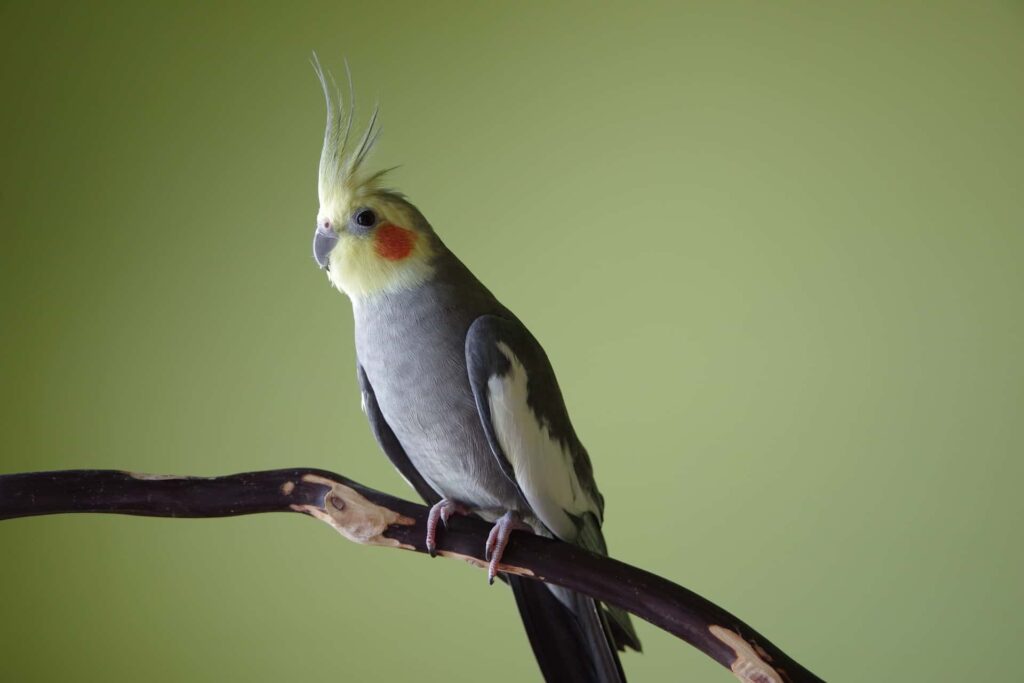
Conclusion
Cockatiels are known for their playful, sociable, and intelligent nature, and a well-suited cage ensures they can express their natural behaviors, remain physically active, and stay mentally stimulated. As we’ve explored in this guide, several factors influence the ideal cage size, including the bird’s wingspan, activity levels, and the number of cockatiels you plan to house. Additionally, the spacing between cage bars is vital to prevent any potential injuries or escapes. Moreover, we’ve emphasized the significance of creating a dynamic environment within the cage by incorporating various perches, toys, and feeding stations. This not only keeps your cockatiel engaged but also promotes their overall well-being.
Ultimately, the size of a cockatiel cage is not just about providing shelter; it’s about fostering a space where your feathered friend can lead a happy, healthy, and enriched life. By carefully considering these factors and tailoring your cockatiel’s cage to their specific needs, you’ll be well on your way to building a strong and affectionate bond with your cherished avian companion. Remember that investing in the right cage size and enrichment items is an investment in the long-term health and happiness of your cockatiel. In the quest to determine how big a cockatiel cage should be, it’s essential to recognize that this decision directly impacts your bird’s overall quality of life. Cockatiels are not just pets; they are intelligent, social, and emotionally sensitive creatures that thrive on interaction and stimulation. Thus, the size of their living space is not merely a matter of convenience; it’s a fundamental component of their well-being.
In this guide, we’ve explored the various aspects that contribute to the ideal cage size for cockatiels, including their natural behaviors, physical requirements, and the importance of socialization. We’ve also discussed how factors like cage bar spacing and cage layout play critical roles in ensuring your cockatiel’s safety and happiness. By adhering to the principles outlined here and providing your cockatiel with an appropriately sized cage equipped with enrichment items, you’re not just meeting their physical needs; you’re also nurturing their mental and emotional health. A well-designed cage allows your cockatiel to spread their wings, exercise, explore, and engage in activities that mimic their natural habitat, ultimately resulting in a happier and healthier pet.

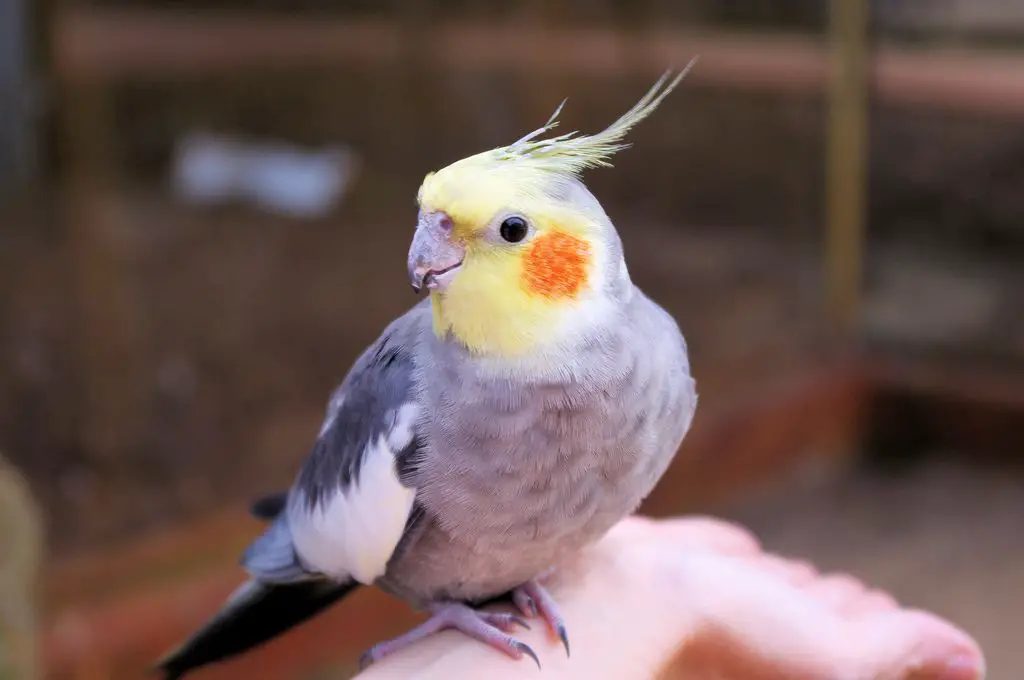
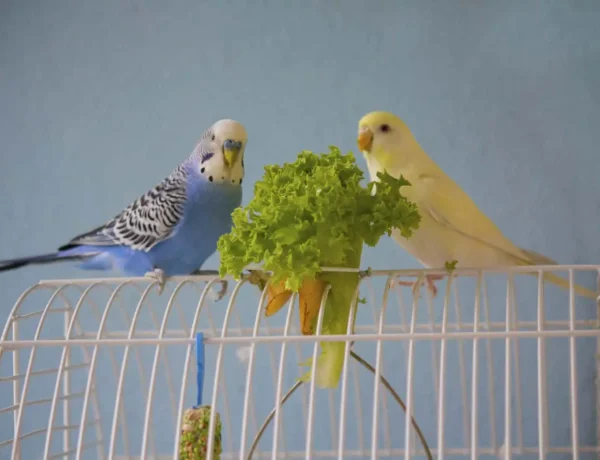
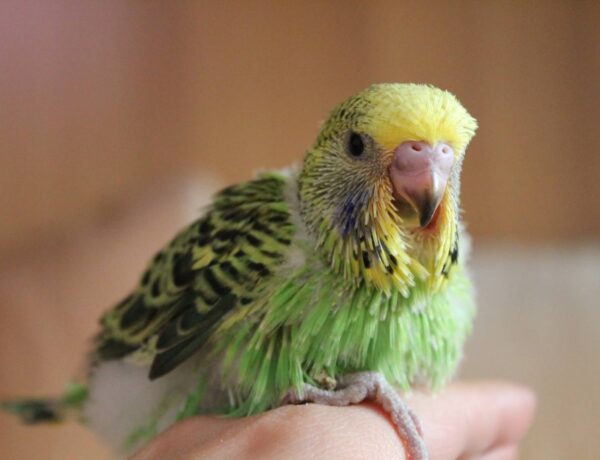
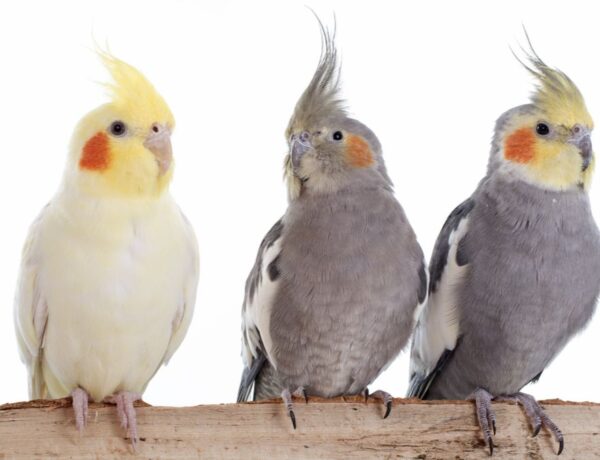
No Comments